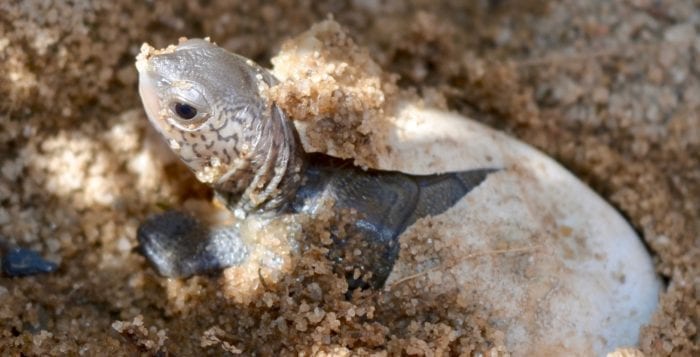 MEET OLAF! This handsome boy is Olaf, a two-year-old medium-haired orange tabby who is currently waiting for his furever home at Kent Animal Shelter. Olaf loves to snuggle and is super mushy. He comes neutered, microchipped and up to date on all his vaccines. Won’t you stop by and say hello? Kent Animal Shelter is located at 2259 River Road in Calverton. For more information on Olaf and other adoptable pets at Kent, please call 631-727-5731 or visit www.kentanimalshelter.com.
MEET OLAF! This handsome boy is Olaf, a two-year-old medium-haired orange tabby who is currently waiting for his furever home at Kent Animal Shelter. Olaf loves to snuggle and is super mushy. He comes neutered, microchipped and up to date on all his vaccines. Won’t you stop by and say hello? Kent Animal Shelter is located at 2259 River Road in Calverton. For more information on Olaf and other adoptable pets at Kent, please call 631-727-5731 or visit www.kentanimalshelter.com.
Photo of the Week
HELLO WORLD! Maria Hoffman of Setauket was in the right place at the right time when she snapped this photo of a diamondback terrapin hatching at West Meadow Beach in Stony Brook on Aug. 20. She writes, ‘I met a young woman, Emmy Silver, who was standing watch over a diamondback terrapin nest that had begun to hatch on the side of the path to the Gamecock Cottage. She was a volunteer for Friends of Flax Pond, which monitors the turtle nesting. While I spoke with her, we watched this one egg hatch. The little turtle was only about 2 inches long. Once it broke its head out of the egg, it rested for a long while. But once it was ready to come out, it made a fast push and then all its movements were fast. It was one of the most amazing things I’ve ever seen!’
Send your Photo of the Week to [email protected].
Shelter Pet of the Week: Biggie
 MEET BIGGIE! Biggie recently arrived at Kent Animal Shelter after being rescued from a high kill shelter in the south. A handsome Lab mix, this sweetheart is about 2 years old, weighs 55 pounds and is such a delight! Biggie is currently being treated for heartworm at the shelter, but he is still available for adoption. If you are interested in adopting him and helping him recover, please come by the shelter to meet him! Biggie gets along well with other dogs but does not seem to be too fond of cats. He comes neutered, microchipped and up to date on all his vaccines.
MEET BIGGIE! Biggie recently arrived at Kent Animal Shelter after being rescued from a high kill shelter in the south. A handsome Lab mix, this sweetheart is about 2 years old, weighs 55 pounds and is such a delight! Biggie is currently being treated for heartworm at the shelter, but he is still available for adoption. If you are interested in adopting him and helping him recover, please come by the shelter to meet him! Biggie gets along well with other dogs but does not seem to be too fond of cats. He comes neutered, microchipped and up to date on all his vaccines.
Kent Animal Shelter is located at 2259 River Road in Calverton. For more information on Biggie and other adoptable pets at Kent, please call 631-727-5731 or visit www.kentanimalshelter.com.
One on One with Pam Green
By Heidi Sutton
Kent Animal Shelter in Calverton has been a haven for shelter pets for almost half a century. In 2016, under the helm of Executive Director Pam Green, the shelter placed a record-breaking 1,016 animals in new homes and recently received a 4-star rating from Charity Navigator. The Stony Brook resident recently took some time out of her busy schedule to talk about the shelter that has been her passion for 32 years.
Do you have any pets?
Yes, I have only a few pets. One small dog that accompanies me to work every day, Frodo; he is a puppy mill rescue that came to Kent in 2012; two cats, Wilson and Nellie, that were the offspring of a feral cat; and I added an equine to the mix in 2009, Ascot.

Did you have any pets growing up?
Yes, I came from a family of animal lovers, most notably my mother and father who had great love and compassion for all animals. We were always bringing some critter into our home including dogs, cats, rabbits, chickens, a duck named Sam, a pony named Inca and a horse named Willy. If it needed a home, our doors were always open.
Did you always know that you wanted to work with animals?
Yes, as a young high school student my intention was to pursue a career in animal welfare, perhaps veterinary medicine.
How did you arrive at Kent?
I arrived at the Kent Animal Shelter in 1985. My intention was to continue my postgraduate education at the University of Kentucky. That did not seem to be in the cards as I responded to an advertisement for an executive director at the Kent Animal Shelter, a little-known animal shelter located on the east end of Long Island.
The organization was in dire straits financially at the time. There were very few animals, the spay/neuter clinic was closed and there were only two employees. I was introduced and interviewed by a volunteer board of directors, 13 members. In retrospect I believe they had their sights set on a candidate who they felt had the potential to lead and the background knowledge to help the shelter emerge from a critical situation. I decided to make re-opening the spay/neuter clinic a priority and went forth with that effort.
There was only a small list of donors actually hand written in a book, and so I began to write letters telling of the shelter’s plight and asking them to help. Donations slowly began to come in, and the list began to grow. We started taking animals from local municipal shelters that in those days also had a fairly high rate of euthanasia. The clinic didn’t take very long to get back into the full swing of things.
Today the shelter is financially secure and rescues animals from crisis situations across the country and sometimes internationally as well. The mission is the same as it was in 1968; however, the depth and breadth of the operation has grown enormously over the years. It still remains a smaller, personal organization. However, in 2009 it was honored as Shelter of the Year by North Shore Animal League and Purina for its innovative approach to adoption, rescue and population control.
Tell us about Kent’s spay/neuter clinic.
Last year 3,928 animals were spayed or neutered. The clinic is low cost to enable everyone to have their pets sterilized. Many pet owners cannot afford the service, and their pets are left to add to the overpopulation of homeless animals. Kent throughout the year receives grants from foundations such as PetSmart Charities and Pet Peeves Inc. and the ASPCA. These grants allow the clinic to perform these surgical procedures for just a $20 co-pay or in some cases not fee at all to the pet owner. The clinic, with the help of an ASPCA grant, is embarking on a campaign to help pet owners on public assistance or suffering from disabilities or financial hardship to have their pet spayed or neutered also for a minimal co-pay. Pet owners that would like to get more information can call the clinic at 631-727-5731, ext. 2.
I understand you took in homeless animals from Hurricane Harvey?
The shelter has taken in many rescues from Texas and the Carolinas previous to Hurricane Harvey. Unfortunately, the shelters there have high kill rates and are lacking in aggressive spay/neuter programs. However, the storms presenting this year are wreaking havoc in many places, notably Houston. The shelter was prepared to accept 15 animals from Austin Pets Alive, an organization working with animals displaced by Hurricane Harvey. Only six animals arrived on the recent transport, but more are scheduled to come in the ensuing weeks.
Why should people adopt a shelter pet rather than buy a dog from a pet store or breeder?
Potential adopters should elect first to adopt, not shop. Pet stores obtain their animals from puppy mills located in many places in the U.S., most notably Missouri. The public is often unaware of that fact and are finding that when they purchase a pet from a pet store, they are setting themselves up for getting a pet with congenital defects such as heart murmurs and/or diseases that present after the purchase. There are reputable breeders, however; those breeders do not sell their puppies to retail pet shops. There are many rescue organizations and shelters that have beautiful pets that have been vetted and neutered.
Tell us about your upcoming fundraiser.
On Sunday, Oct. 1 we will be holding our 5th annual Wines & Canines Run/Walk fundraiser. It is widely successful and takes place at Baiting Hollow Vineyard and Horse Rescue on Sound Avenue. This year, the proceeds will go to finance expenses incurred due to intake of rescued animals from hurricane ravaged states. The shelter also hosts a comedy night at the Hotel Indigo in Riverhead every year in the spring.
What’s next on the agenda?
We have hopefully found a perfect location for the construction of new kennel facility along with exercise pens, interaction rooms to acquaint potential adopters with a new pet, grooming room, storage etc. Over the next year, the board of directors and myself will be in negotiations with the Town of Riverhead to secure the needed permits. It is my goal to finalize everything and go forward in the planning and construction of the new building next year, which is a huge milestone for this organization, the 50th anniversary of helping homeless animals! The present facility will be kept intact minus the antiquated kennel building. That will also allow the shelter to restore the beautiful riverfront behind the kennel to its original state.
How can the public help?
Donations of blankets, towels, newspapers and money are all needed along with volunteers. There is an Amazon Wish List on Kent’s website, www.kentanimalshelter.com. We encourage anyone who wants to donate to take a look at the list and choose any items that they would like to send or bring to the shelter.
Film company strives to spread awareness about global warming

By Kevin Redding
“There’s a battle outside and it is ragin’ … for the times they are a-changin.’’
The words and music of Bob Dylan will serve as a fitting soundtrack at Madison Steak House in Hauppauge Sunday, Sept. 24, during a special fundraiser to highlight and benefit the work of Eyes of the World Films — a New Jersey-based documentary company that focuses on the environment and socially relevant issues.
The Complete Unknowns, a Dylan cover band that spans the singer/songwriter’s six-decade catalog, take the stage at 5 p.m. and will rock the house with a mix of Dylan’s popular tunes and deep tracks until the end of the event at 8 p.m. Guests will enjoy a four-course dinner menu, have the opportunity to win raffle prizes that include a variety of Dylan memorabilia, and learn about Eyes of the World’s upcoming projects during the company’s quarterly fundraiser.
“Bob Dylan’s music really speaks to my heart and really opened my eyes as to what’s going on in the world when I was younger,” said Denise Dragiewicz, former Smithtown resident and the president of Eyes of the World Films. She directs and edits the company’s documentaries while her husband, Marc, a biologist, serves as environmental consultant and chooses each film’s subject and locations. “And that’s exactly what we’re trying to do — open people’s eyes to what’s going on with the environment and get people engaged.”
All proceeds from the fundraiser will go toward the production and completion of two new films being developed by the husband-and-wife duo.
“The Burning of Borneo’s Peat Swamp Forest,” which has begun filming in Palangka Raya, Central Kalimantan, and will be the company’s fifth documentary, explores the degradation of Indonesian forestland in recent decades by way of out-of-control fires brought on by the region’s dry season.
 The decimation has also hit the areas surrounding Sabangau National Forest, home to the largest breeding population of orangutans, and, as of now, 80 percent of orangutan habitat has been wiped out — a major focus of the film.
The decimation has also hit the areas surrounding Sabangau National Forest, home to the largest breeding population of orangutans, and, as of now, 80 percent of orangutan habitat has been wiped out — a major focus of the film.
A short version of that documentary, made up of footage shot in Palangka Raya last winter, recently won the YALE e360 Environmental Video Contest, and the duo hopes to use any funds they raise to return to the location and finish production on a feature-length film on the subject. For the larger film, Denise Dragiewicz said, they are concentrating on a young Dayak activist named Emmanuela Shinta, who is attempting to convince the Indonesian government to protect the remaining forest.
“Indonesia has been on the path of environment destruction for many decades,” Dragiewicz said. “Many areas, including Palangka Raya, where we are filming, have had to deal with horrendous fire seasons that last months at a time [and] not only do these fires damage remaining forestland and what is left of the orangutan habit, but the smoke and murky, yellow haze that is the offspring of these blazes have been causing serious health problems.”
“The environmental films produced and put out are generally about the bigger picture of global warming and the storms,” she continued, “but you don’t really see these little community stories and how global warming is hitting people on a smaller level and that’s what we’re trying to show.”
Marc Dragiewicz, who regularly works in environmental conservation with specific expertise and experience in rainforests, said of the film, “This is the largest project we’ve worked on yet and it’s important. It’s a subject that’s really happening right now and affecting a lot of people. It’s kind of a cautionary tale that if we’re not careful, we’re going to lose our wildlife and we’re going to have some really bad air coming up in the future.”
The other film, titled “In the Dark,” is still in preproduction and will be the duo’s first feature narrative, revolving around the sexual violence against women and children in South Africa.
The filmmakers’ documentaries have played at a variety of film festivals around the world and appear on several environmentally friendly websites like Life of Terra and Sustainability TV.
They said an ideal goal from this fundraiser would be $5,000. Of course the films will cost more than that but every little bit helps, Denise Dragiewicz said.
“The more we’re able to raise, the more we’re able to produce these types of documentaries and that’s really important to me,” she said. “The fundraisers are a real celebration of art and passion, and we hope we can not only raise funding but also draw more people into being aware of the importance of preserving our natural habitats.”
Michael Weiskopf, lead singer of The Complete Unknowns — a six-piece band that formed 10 years ago out of a love for Dylan’s music — said when Dragiewicz contacted him to play the fundraiser, he was drawn in by her passion.
“I thought, ‘this is a serious filmmaker and this is a serious subject,’” Weiskopf said of orangutan conservation. “I’m interested in helping living things that can’t speak for themselves … so it’s a good cause to get involved in.”
As a self-professed “unapologetic Bob Dylan devotee,” Weiskopf said he looked forward to the event and attendees should expect to hear a wide variety of Dylan songs, old and new.“When you have 600 plus songs to choose from, it’s always interesting,” he said.
The fundraiser starts at 4 p.m. at Madison Steak House, 670 Motor Parkway in Hauppauge on Sunday, Sept. 24, and will cost $25 for the bar and $50 for dinner and the show. You can buy tickets at www.brownpapertickets.com/event/3047480.
 Visit www.eyesoftheworldfilms.com and www.michaelweiskopf.com for more information.
Visit www.eyesoftheworldfilms.com and www.michaelweiskopf.com for more information.
Ask the Vet: Disaster preparedness and first aid for your pets
By Matthew Kearns, DVM

Harvey, Irma, and now Jose still pose a threat. I recently read an article that referred to a study that documented 16 percent (mostly low income and elderly) of people interviewed would not evacuate without their pets, and 44 percent of those who refused to evacuate during Hurricane Katrina did so in part because they did not want to leave their pets behind.
I started thinking of what I would do with my own animals should there be a disaster or simple emergency at home. Although we haven’t had devastation on Long Island since Hurricane Irene or Hurricane Sandy, I think a checklist to be adequately prepared for emergencies or evacuations (especially on short notice) for our pets should be a priority.
Have an evacuation plan. This includes a “safe haven.” Find out ahead of time if there are any shelters that take animals during a disaster, pet-friendly hotels to go to or an out-of -own relative or friend that will take both you and your pet during a disaster.

Put together a first aid kit. A basic first aid kit for your pet should include: blanket, thermometer, penlight, sterile 4×4 gauze pads, sterile dressing (small, medium, large), roll gauze, 1- and 2-inch white tape, nonstick (Telfa) bandages, triangular bandage and safety pin, cloth strips, Betadine or triple antibiotics, scissors, tweezers, instant cold pack, hydrogen peroxide, splint, veterinarian’s phone number, local emergency clinic’s number, poison control telephone number, glucose concentrate (e.g., Karo Syrup or other syrup), canned dog or cat food and bottled water.
Once you have your first aid kit prepared, you will be ready for most emergencies. Here are some tips on handling most general emergencies:
• If an animal is frightened or in pain, it may bite (even friendly dogs or cats). If you find an injured animal, consider using something to muzzle (small piece of rope, a tie, etc.) or throw a large thick blanket over the pet to pick it up. Please do not get yourself hurt trying to help a scared, injured, potentially dangerous animal.
• Anything makes a good stretcher (flat piece of board, old door, etc.). If your pet has a bite wound or penetrating wound, try to keep the wound clean and moist until your pet can be transported to your regular veterinarian or an emergency veterinary hospital. Moistened clean cloths, gauze, etc. can be used. If there is excessive bleeding, direct pressure should be applied (consider an ACE bandage, other). Do not try to remove anything that is impaled into the pet.
• Bone fractures can be immobilized with a splint. A splint can be made up of rolled up magazines or newspapers, cardboard, a metal hanger or wood. If it is an open/compound fracture, cover it with a clean moistened dressing. If the animal cannot or will not allow a splint, just try to keep it confined until you can transport it to either your regular veterinarian’s office or an emergency veterinary hospital. Hopefully none of this will be necessary. However, in order to reduce stress and trauma to both you and your pet both during and after a disaster, it is important to plan ahead.
Dr. Kearns practices veterinary medicine from his Port Jefferson office and is pictured with his son Matthew and his dog Jasmine.
Shelter Pet of the Week: Zap
MEET ZAP! Zap is a 1-year-old terrier mix who recently came from the Bahamas where dogs (known as potcakes) don’t have a very good life. That’s all behind him now, and he’s ready to settle in with a forever family! A smart, well-behaved guy, he walks nicely on a leash and sits on command for treats. You’re sure to love him! Zap comes neutered, microchipped and up to date on all his vaccines. Kent Animal Shelter is located at 2259 River Road in Calverton. For more information on Zap and other adoptable pets at Kent, please call 631-727-5731 or visit www.kentanimalshelter.com.
Update: Zap has been adopted!
Book Review: ‘The Adventures of Honey & Leon’
Reviewed by Melissa Arnold

Have you ever wondered what your pets are thinking, or what they’re up to when you’re not around? Actor Alan Cumming and his photographer/illustrator husband, Grant Shaffer, sure have. Constantly entertained by their late beloved dogs, Honey and Leon, the couple decided to share the fun in their new children’s book, “The Adventures of Honey & Leon,” beautifully illustrated with a silly, imaginative story line. Cumming and Shaffer, who have been together for 13 years, recently answered questions about the book via email.
Tell us a little bit about yourselves. Were you always animal lovers?
Alan Cumming: I always had animals around me growing up. I had two little West Highland Terrier dogs when I was a little boy, but as I lived on a country estate there were always sheep and cows and deer and pheasants around.
Grant Shaffer: I’ve always been an animal lover. I grew up with dogs, cats, a rabbit, lizards, snakes, hamsters, fish … I even had a pet rat that I was crazy about.
Is this your first foray into writing/illustrating?
AC: I’ve also written “Tommy’s Tale,” a novel published in 2002; “Not My Father’s Son,” a No. 1 New York Times best-selling memoir; and a book of photographs and stories titled “You Gotta Get Bigger Dreams.” GS: I illustrated a children’s book last year called “Three Magic Balloons,” written by Julianna and Paul Margulies.
How did you come up with the story line?
 GS: The idea came up when we’d be traveling and missing our dogs. We would spot people at the airport, on the street or at a beach and say, “There’s Honey” (old lady in a bathrobe and a floppy sun hat), or “There’s Leon” (short little guy wearing big sunglasses and a flat cap), and the story just grew from there. The problem with dogs is that they don’t stick around forever. I think this was our way of trying to immortalize them, and we thought kids would like this tale.
GS: The idea came up when we’d be traveling and missing our dogs. We would spot people at the airport, on the street or at a beach and say, “There’s Honey” (old lady in a bathrobe and a floppy sun hat), or “There’s Leon” (short little guy wearing big sunglasses and a flat cap), and the story just grew from there. The problem with dogs is that they don’t stick around forever. I think this was our way of trying to immortalize them, and we thought kids would like this tale.
AC: It seemed such a good collaboration considering our respective jobs. I love the idea that we have created something together that celebrates the creatures we loved so much.
What was the process like?
GS: Alan wrote the story first, and then I added the drawings. We mulled the idea of doing a children’s book for years, so it took a long time. It was great, and pretty fluid. I’ve heard of some couples who are barely speaking to each other after a joint project like this, but luckily that’s not us!
How did you come to adopt Honey and Leon?
GS: Before we met, Alan had adopted Honey, and I had adopted Leon, so when we got together, so did they. They were pure love and magic to us, but all dog owners think that about their dogs. Leon would sing (howl) along to Radiohead or if a siren went by, and Honey always crossed her paws like a lady, and she’d actually pose for a camera, looking left, then right.
Did you often wonder what the dogs were thinking at home?
 GS: All the time. It usually involved food and dog treats I think. One time we rang up a pet psychic, so she could tell us what the dogs were thinking. She was so off, saying that Leon didn’t like my phone’s ringtone (I never used a ringtone) and that Honey wanted Alan to eat more vegetables (as a vegan, that’s all he eats). It was worth a funny phone call though.
GS: All the time. It usually involved food and dog treats I think. One time we rang up a pet psychic, so she could tell us what the dogs were thinking. She was so off, saying that Leon didn’t like my phone’s ringtone (I never used a ringtone) and that Honey wanted Alan to eat more vegetables (as a vegan, that’s all he eats). It was worth a funny phone call though.
Can you share with the readers a favorite story about Honey and Leon?
GS: We used to play a game: If I walked the dogs, Alan would hide somewhere in the house. Alan’s hiding places became more involved, and the chase would become more frantic each time. I would guide them with “hot” and “cold,” and Alan would clue them in with a whistle. When they’d finally find him, it was like a family reuniting that had been separated for decades — lots of whining and licks!
 Do you two hope to adopt pets again someday?
Do you two hope to adopt pets again someday?
GS: We already did! When Honey died (from old age), Leon was so lonely, so we adopted a Chihuahua mix named Jerry. Then Leon died (from old age) and we adopted Lala (a mini-collie mix, but she looks like a black fox). We are in love all over again.
Is there a particular message you hope to pass on to kids with this book?
GS: I like that the story features two gay dads, but that isn’t the story really. It’s just, “Here is our family on a fun adventure together.” I guess that’s a message in itself.
Who is your target audience?
AC: We recommend the book for kids ages 3 to 7.
Are there any other books we can look forward to from you?
GS: “The Further Adventures of Honey & Leon” comes out in 2019. “The Adventures of Honey & Leon” is available online and in stores wherever books are sold.
Cumming and Shaffer will make a special appearance at the Cinema Arts Centre, 423 Park Ave., Huntington on Sept. 18 at 7:30 p.m. Tickets are $75, $60 members. The event, hosted by Jud Newborn, includes a rare screening of Cumming’s “The Anniversary Party,” followed by a Q&A and book-signing reception for “The Adventures of Honey & Leon.” Every ticket holder will receive a copy of the book. Call 631-423-7611 for more information.
Locals helping animals affected by Hurricane Harvey
After internet sensation Storm, an English golden retriever, saved a drowning fawn from Port Jefferson Harbor, now owner Mark Freely is looking to help others.
Last Chance Animal Rescue is teaming up with Freeley’s North Shore Injury Lawyer and volunteer Jeff Segal, owner of Boom Event Source, to help thousands of animals affected and displaced by Hurricane Harvey.
Freeley is an animal adoption event leader, foster and pro bono attorney for Last Chance Animal Rescue on Long Island. He said the organization has a truck leaving next Wednesday, Sept. 6, being driven by Segal’s friend transporting all needed supplies to Texas, according to an email from Freeley.
There is a need for donations of dog and cat food bowls, leashes, collars, collapsible crates, cat litter and disposable litter pans.
“Last Chance has already stepped up to donate many of their existing donations to help these animals who are in dire need,” Freeley said of the Southampton-based nonprofit. “Donations will help us to send these items to Texas, and purchased items can also be donated to us.”
Items to be donated must be handed in no later than Sept. 5. Items can be brought to Freeley’s law office at 144 Woodbury Rd. in Woodbury from 8 a.m. to 6 p.m., to Boom Event Source located at 11 Michael Avenue in Farmingdale from 11 a.m. to 6 p.m. or to the Last Chance adoption event at the Selden Petco Sept. 2 from 9 a.m. to 3 p.m.
A truck will be dropping off supplies to the George Brown Convention Center in Houston, Texas, which is housing over 400 animals and 8,000 people, to San Antonio Pets Alive Rescue and some will also be dropped off at St. Hubert’s Animal Welfare Center in Madison, New Jersey, which will be taking in 200 displaced rescue animals from the Texas flooding.
“They are so desperately need our help, and as much as possible,” Freeley said. “The animals of Texas are counting on us.”
Freeley has already collected $2,200 from 41 people in less than 24 hours after creating a GoFundMe page to help the cause. The current goal is $3,000.
“Thank you for helping these poor animals,” Danielle DiNovi said with her donation.
“God bless the victims of Hurricane Harvey,” wrote Geri Napolitano with a contribution to the cause, “both big and small.”
Selden Dog Park receives grant

By Kyle Barr
Dog owners in Brookhaven have something new to bark about, as the Town of Brookhaven received a grant to make improvements to the Selden Dog Park.
Last week, Councilman Kevin LaValle (R-Selden) announced the town was one of just 25 local municipalities out of 215 from across the country to receive pet supply manufacturer PetSafe’s annual Bark for Your Park grant — a $10,000 prize. Most of the funds will be used to install new water stations and water fountains inside the dog park, and the rest will go toward minor improvements.

“We have a lot of dog owners that want a place where they can bring their dog who can run around with other dogs who live in the area,” LaValle said. “That’s where this all started — a lot of dog lovers out there who needed a place to go.”
Selden resident Taylor Gittin has already visited the park several times with his 1.5-year-old dog Cassie since recently moving to the area from Chicago.
“There were some parks in the neighborhood, but they were concrete, so its nice that there are trees and she can run on [the sand],” Gittin said of his old park compared to the one in Selden. “A few times coming here I forgot water bottles from home because I’m used to other dog parks having [fountains], so that’s the biggest thing for me [the town could improve on].”
Not including villages and private property, the town currently supports two off-leash dog parks — in Selden and Middle Island. The Selden Dog Park will receive sprinklers, and new plants will help beautify the entrance. Slats will be added to the entrance gate so excited dogs don’t crowd the entrance as new owners enter.
“We’re always looking to save taxpayers money, and going out and getting these grants, whether it’s for infrastructure or parks, is something we really focus in the town because it offsets our costs,” LaValle said. “It’s these little extras that the residents want and the residents need that helps keep the tax bills down. We beat out municipalities from all over the country, so this was a great thing.”
“A few times coming here I forgot water bottles from home because I’m used to other dog parks having [fountains], so that’s the biggest thing for me [the town could improve on].”
—Taylor Gittin
The Bark for Your Park grant began in 2011 as a social media contest that would earn just over 40 applicants PetSafe Brand Marketing Specialist Justin Young said in an email. In 2016, the contest was transformed into a grant-giving campaign. There are 25 grants available in different funding levels — communities building a new park can apply for a $25,000 grant, communities performing maintenance on existing parks can receive $10,000 and communities that desire new equipment can get $5,000 worth of park accessories through park furnishing company Ultrasite, a partner of PetSafe.
“The program is all about finding enthusiastic, pet-loving communities that support green spaces, with civic leaders and community organizations who want to improve their communities and encourage responsible pet ownership,” Young said in the email.
Centereach resident Kevin Harrigan is a regular to the park and takes his three dogs Ruby, Max and Jasper for a walk around Selden almost every day.
“This dog park is a God send,” Harrigan said. “From my perspective, there’s a lot of people like me — I’m in my 60s, I’ve been living in this community for 20 years and I pay my taxes every year. I have three dogs. I can’t bring them in the parks, can’t bring them in school areas. I pay the taxes to pay for all these things and I can’t enjoy any of them. [A good amount] of the population are out here without kids, so for a lot of us, dogs are our kids.”












